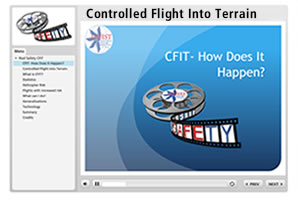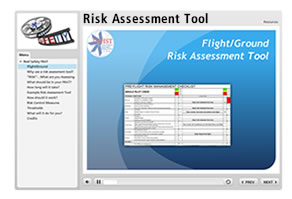For a complete list of fact sheets from IHST go here.
Contact: Tony Molinaro
tony.molinaro@faa.gov or (847) 294-7427
7 Decision-Making Tips That Every Helicopter Pilot Needs to Know
The following strategies can improve decision making. Training pilots on these solutions will allow them to make better choices before and during their flights.
Follow Standard Operations Procedures – SOPs are widely used throughout the commercial aviation community as a means to manage risk. The establishment of safety oriented SOPs (including personal and weather minimums) provides pilots with pre-planned responses that manage the risks and break the “chain of events” leading to accidents. To be effective, SOPs must be clear, concise and free of conflict. Use of SOPs is a form of “rule-based” behavior and is less error prone than “knowledge-based” behavior.
Conduct Pre-Flight Planning – Planning that is conducted prior to a flight in a low stress environment can enable a pilot to produce a safe strategy for the flight (i.e.: the pilot can be proactive and plan ahead to select a safe route and establish “decision points” during each flight phase). Collaborative decision-making with air traffic control, weather services, and other pilots will help to size up a general situation. Good pre-flight planning also reduces the workload once airborne.
Forget the Illusion of Plan B – Research has suggested that having a plan B safety net encourages continuation and possibly more risky behavior. Naturally it is easier to take a risk when you know that you can count on a plan B. Pilots however rarely assess their plan B properly; so the protection can be weaker than expected.
Learn Single-Pilot Resource Management – This is a practical way to teach pilots better decision-making and judgment strategies. Single-Pilot Resource Management is the capacity to manage all resources (both on-board the aircraft and from outside sources) available to the single-pilot prior to and during the flight to ensure a safe flight. It is a form of Crew Resource Management for single pilot operations. Single-Pilot Resource Management includes several components such as Aeronautical Decision Making, Risk Management, Task Management, Automation Management, Controlled Flight Into Terrain Awareness, and Situational Awareness. Single-Pilot Resource Management training helps the pilot to maintain situational awareness by managing the flight and navigation tasks and to enhance the social skills needed to communicate and interact, for instance, with air traffic control and passengers. Single-Pilot Resource Management training enables the pilot to accurately assess and manage risk and to make better decisions.
Practice Threat and Error Management – Training for Threat and Error Management training can be referred to as a form of ‘defensive flying’ for pilots. The objective of Threat and Error Management is to manage in an effective manner the risks stemming from threats and errors to ensure a safe flight. Undetected, unmanaged or mismanaged, threats and errors have the potential to impact the safety of the flight by creating Undesired Aircraft States, which usually can be recovered from, but if not properly managed, it can lead to accidents or incidents.
Get Some Simulator Training – Simulators can allow training decision-making in high stress, high workload situations with poor or conflicting information. Training scenarios can be tailored to the trainees needs. In addition, simulators allow exploration of the consequences of poor decisions without endangering the safety of the aircraft and its occupants.
Understand Good Decision-Making – As early as possible in their training, pilots should be made aware of the characteristics and limitations of human decision making. Trainers should emphasize the importance of maintaining Situational Awareness, of prioritizing responses to Undesired Aircraft States, and of contingency planning, i.e., “What if something goes wrong during the flight?”













